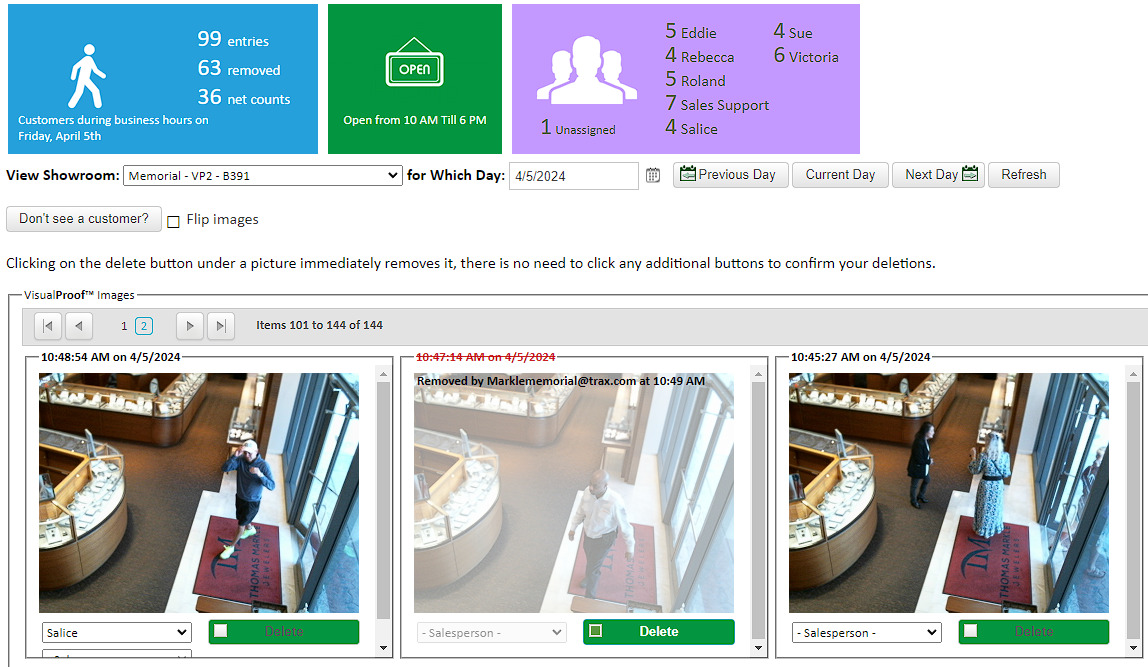Step 1: Installation and Setup
- Install TraxSales Cameras: Begin by installing TraxSales cameras at key entry points of the store to capture accurate foot traffic data.
Step 2: Data Collection and Analysis
- Monitor Foot Traffic: Regularly monitor and review the foot traffic data collected by the TraxSales system. This data will include the number of visitors and the specific times they enter the store.
- Analyze Patterns: Identify peak shopping times, high-traffic days, and any trends in customer behavior. Use this information to adjust staffing and optimize store operations.
Step 3: Salesperson Accountability
- Assign Photos to Salespeople: Utilize the time-stamped photos to assign customer interactions to specific salespeople. This will help in tracking the performance of each employee.
- Evaluate Sales Conversion Rates: Compare the foot traffic data with actual sales to calculate conversion rates for each salesperson. Identify top performers and areas for improvement.
Step 4: Optimize Inventory and Marketing
- Adjust Inventory: Use the data to understand customer purchasing patterns. Optimize the store inventory to enhance the shopping experience and increase sales.
- Targeted Marketing Campaigns: Implement targeted marketing campaigns during high-traffic periods identified by the TraxSales system to maximize engagement and sales.
Step 5: Continuous Improvement and Training
- Regular Training: Provide regular training sessions for sales staff based on insights gained from the TraxSales data. Focus on improving customer interaction and sales techniques.
- Feedback Loop: Establish a feedback loop where staff can provide input on the system and suggest improvements. Continuously refine strategies to keep pace with changing customer behaviors and preferences.
By following these steps, retailers can leverage the powerful data and insights provided by the TraxSales people counter to enhance their sales process, improve customer experiences, and ultimately drive sales growth.


